Travel Trailer or Tiny House: Which is Best?
Travel trailers and tiny homes have some similarities. They both have wheels and can be towed from place to place by the average pickup truck. They have similar features like a bathroom, kitchen, bedroom, and living room. Travel trailer or tiny house: Which would be best for full-time living?
One began as a recreational vehicle, meant for part-time use. The other began as an inexpensive dwelling with the intent of circumventing building codes and zoning laws.
Travel Trailer or Tiny House: which is best for you really depends on how you’re going to be using it. For this post we will assume that each will be used for full-time living.
First, Let’s Clear Up Some Tiny House Misinformation
The bedroom in a tiny house does not need to be a loft
Tiny homes are designed to meet the specific needs of the person or people living in it. They can even be handicapped-accessible with wide doors, large bathroom, and ramps. Many are designed for elderly family members.
Shingles don’t fly off in transit
Tiny house builders prefer metal roofs and siding because it’s lighter and more durable. The panels clamp tightly together. Moving a tiny home does require a bit of preparation and forethought. You are moving a home, not an RV.
RVs may not have better kitchens and bathrooms
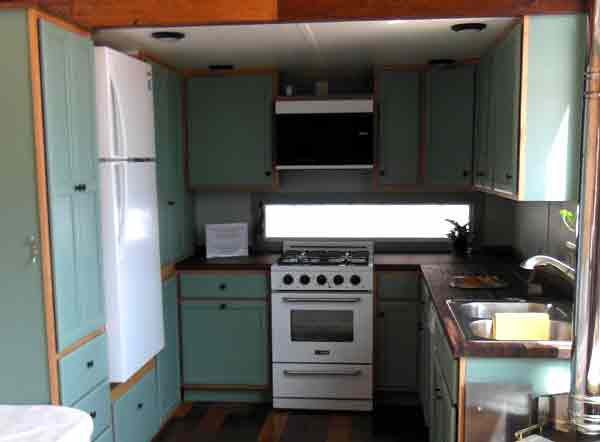 Depending on the owners’ needs, bathrooms and kitchens in tiny houses can rival those of full-size homes. RV kitchens almost always lack in counter space and the cabinets, to be lightweight, are made very inexpensively.
Depending on the owners’ needs, bathrooms and kitchens in tiny houses can rival those of full-size homes. RV kitchens almost always lack in counter space and the cabinets, to be lightweight, are made very inexpensively.
Not all tiny homes have composting toilets
You can put any kind of toilet you want in your tiny house.
Composting toilets were invented to negate the need for costly septic systems. But many zoning codes now insist that at least one toilet be connected to a septic system.
Tiny houses can also be designed with an RV-style commode that requires a black water holding tank. I’ve heard far more complaints about RV toilets with holding tanks than composting toilets.
Tiny homes are not as expensive as stick homes, and not necessarily more expensive than RVs
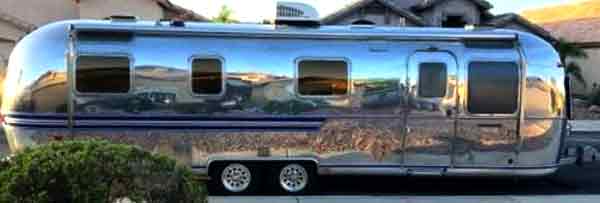
Here’s a used 2012 Airstream trailer on E-Bay listed at $54,500.00*. Click on image to learn more about used Airstream trailers on EBay.
If you use the same materials as standard homes, yes, a tiny home can cost the same amount per square foot. But since a tiny home is…tiny…there are fewer square feet so less overall cost. Cost savings are also realized as the homeowner can build a lot of it themselves saving on labor. Many cash-strapped home builders cleverly up-cycle used building materials saving even more.
Have you seen how much those fancy Class-A motor homes sell for these days? With advances in technology and construction, prices can run into the millions. Travel trailers are also expensive. A 2016, Class-A RV similar to the one shown above is for sale on E-Bay for about $85,100.00*
A 300 sq/ft tiny home (at $200.00/sq.ft.) would cost $60K; less if you build it yourself.
Tiny houses are not limited in size to 8′ wide
13.5′ high yes, same as a travel trailer or RV but 8′ wide, no. A tiny house can be built 10′ or 12′ wide with the right trailer. Moving a structure wider than eight feet does require some permits and flagging but there are companies and websites to help with that. A tiny home that large may also require a commercial truck.
You do not need to hire a moving company with a huge truck to move your tiny house
You will need a truck with sufficient towing capacity just like you would for a travel trailer but you can move your tiny home yourself. Some folks just rent a U-Haul truck to do the move.
Here is a quick side by side comparison of general travel trailers and tiny home design considerations
Travel Trailer Considerations:
|
Tiny house Considerations:
|
Let’s Consider Full-Time Living in an RV
RVs, whether a motor home or a travel trailer, are designed as temporary lodging. They are great for a few days or weeks until the holding tanks are full and the mini-fridge is empty. They are not designed to be lived in during very cold months or the desert Southwest in summer.
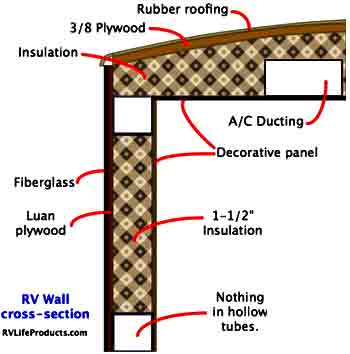
Borrowed image from Pinterest. The link was unfollowable.
In the summer, people are desperate to keep cool even with two roof air-conditioners going full blast. In the winter they need tips to stay warm. Little wonder, with walls that are less than two inches think. RV walls are basically two pieces of fiberglass with Styrofoam in between.
An RV’s wall R-value is usually only R5 with a bit more in the ceiling. A 4-season RV might have a wall R-value of 10 and and R-20 in the roof.
From what I read, a special “Four-Season” RV package makes little difference. At best you’ll need to shovel your roof often and refinish it regularly.
You’ll be dealing with water leaks, frozen pipes, clogged holding tanks, condensation, mold, and power failures. Don’t even get me started on drafty slide-outs.
Don’t get me wrong. You might deal with all of these issues with a tiny house too, unless it’s designed correctly and built well. But with a tiny house you can deal with these known issues during the design and build process rather than making due with aftermarket fixes.
Why do one million people live full-time in an RV?
Motor homes and travel trailers have been around since the invention of the combustion engine. The mobile home industry really took off when the troops came home after WW-II. Many companies saw a huge profit center and began building mobile homes and RVs. Now there are dozens of huge RV manufacturing companies and thousands of RV parks and services catering to the needs of this enormous group.
But mobile homes (now called “manufactured” homes) and RVs are not the same. They are governed by different building codes. Tiny homes? Most building code enforcement officers don’t quite know what to do with them. But that’s changing.
Tiny homes are a relatively new idea
Tiny homes, in their current forms, have only been popular since the late nineties. Read more about tiny house pioneers on this page. Laws and building codes are still catching up to the needs of this new industry. Tiny house villages are beginning to spring up. One day they will be as numerous as RV parks.
Stay in a Tiny Home to See if You Like It

The Acony Bell Tiny House Village is in Mills River, North Carolina. Look into the other Tiny House Villages I’ve listed in the widget section of this page. Make a plan to stay in a tiny home for a week or so to see if you like it. Experience what a tiny home “feels” like. It may be a viable housing alternative for you.
What Do You think? Travel Trailer or Tiny House? Which is Best for Full-time Living?
Leave your comments below.




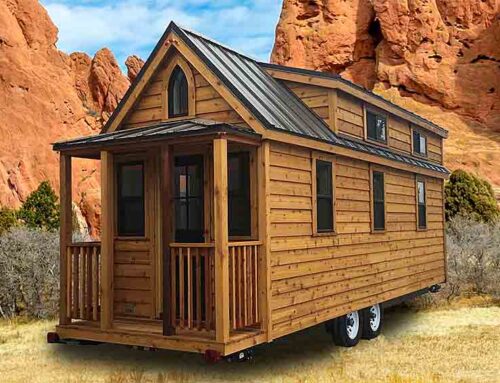
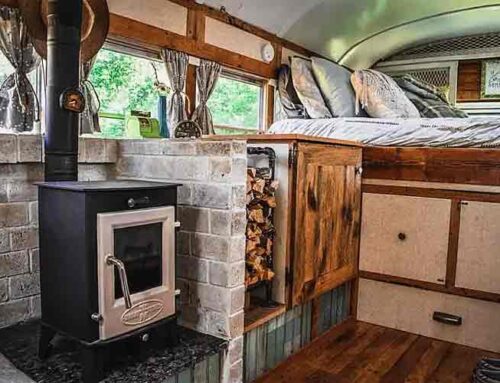
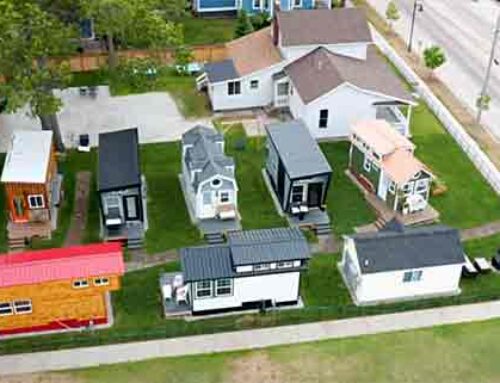
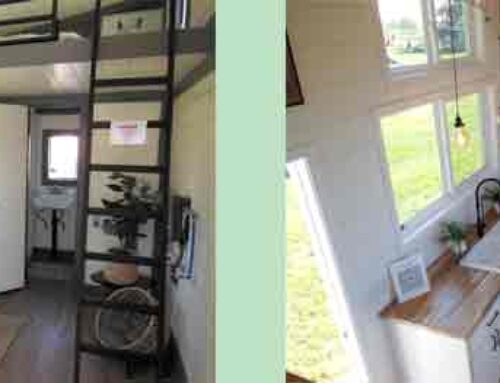
Leave A Comment